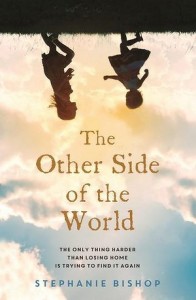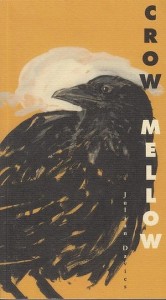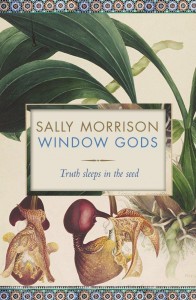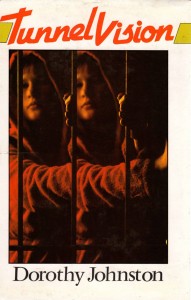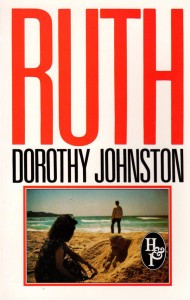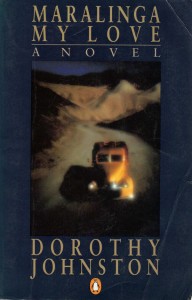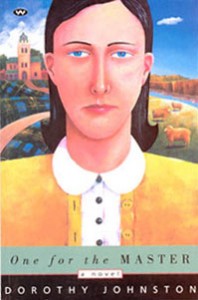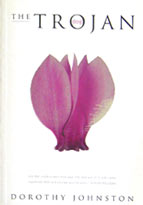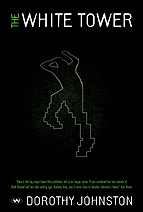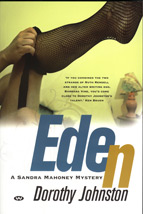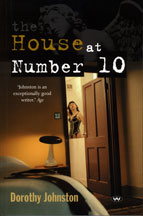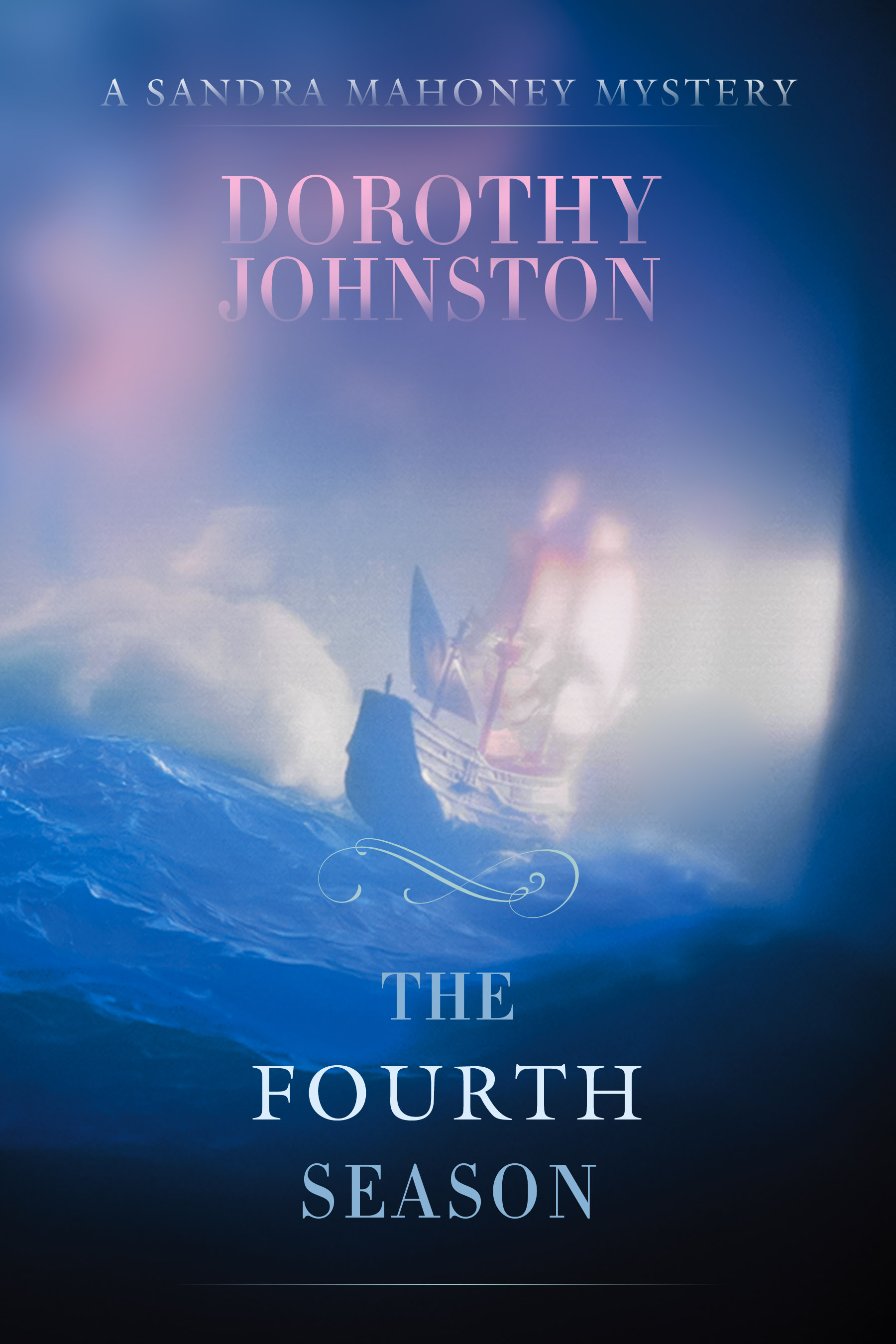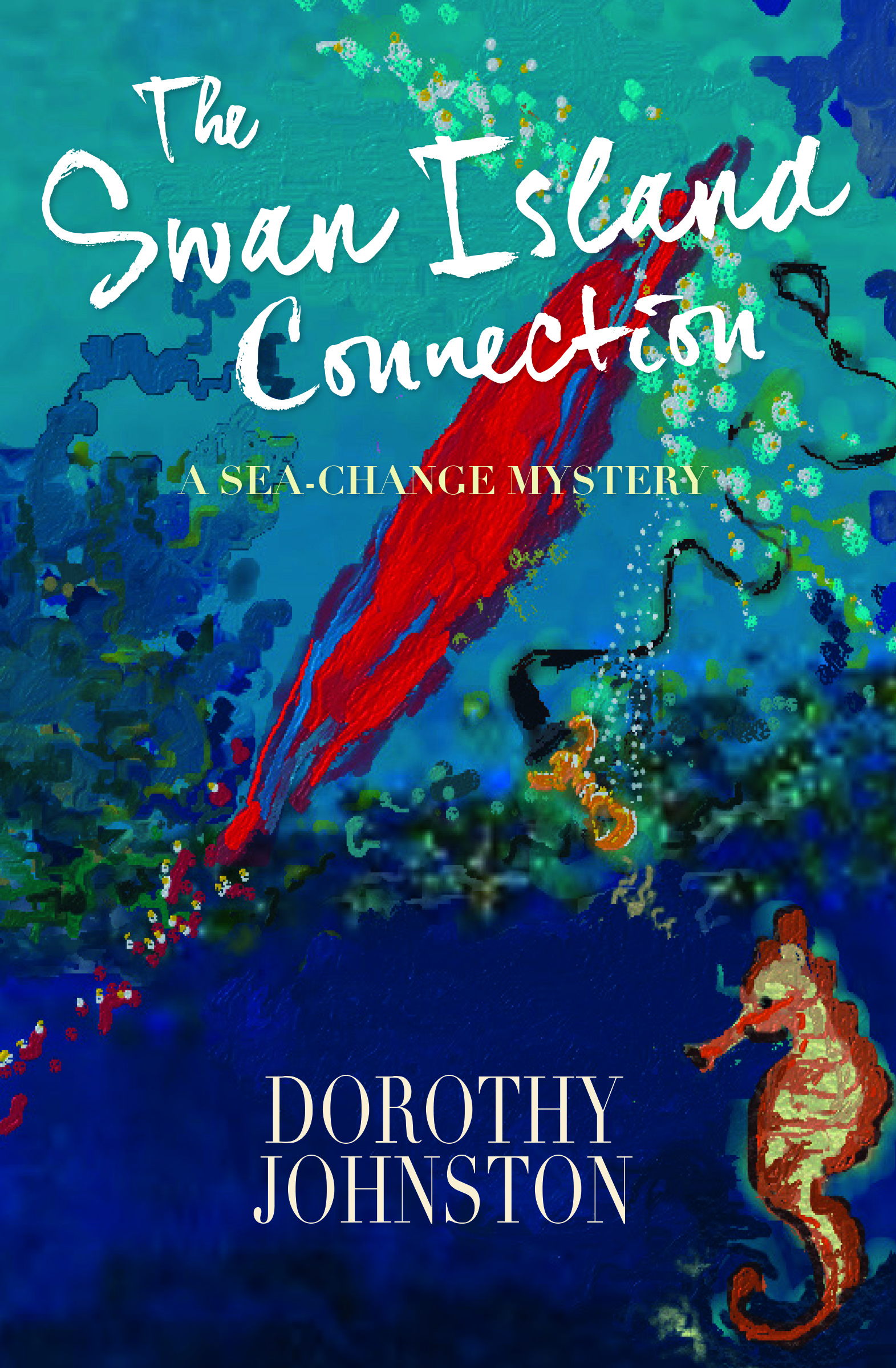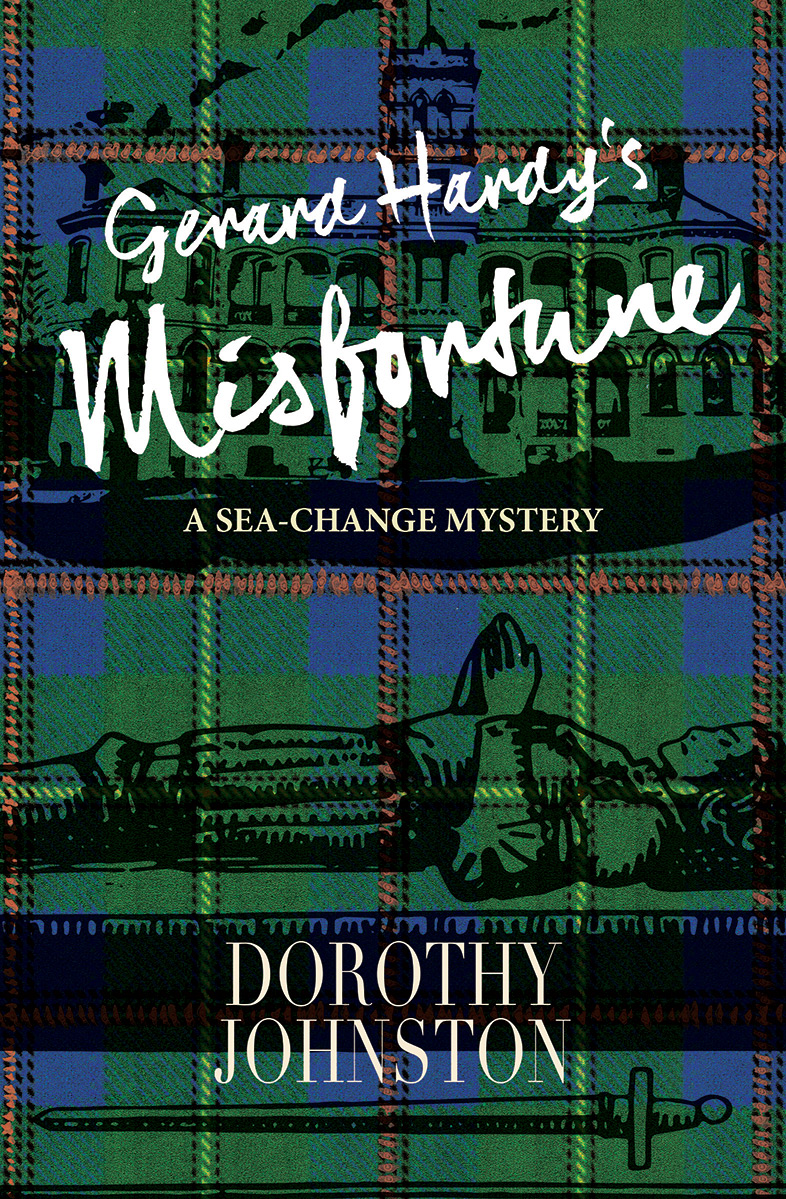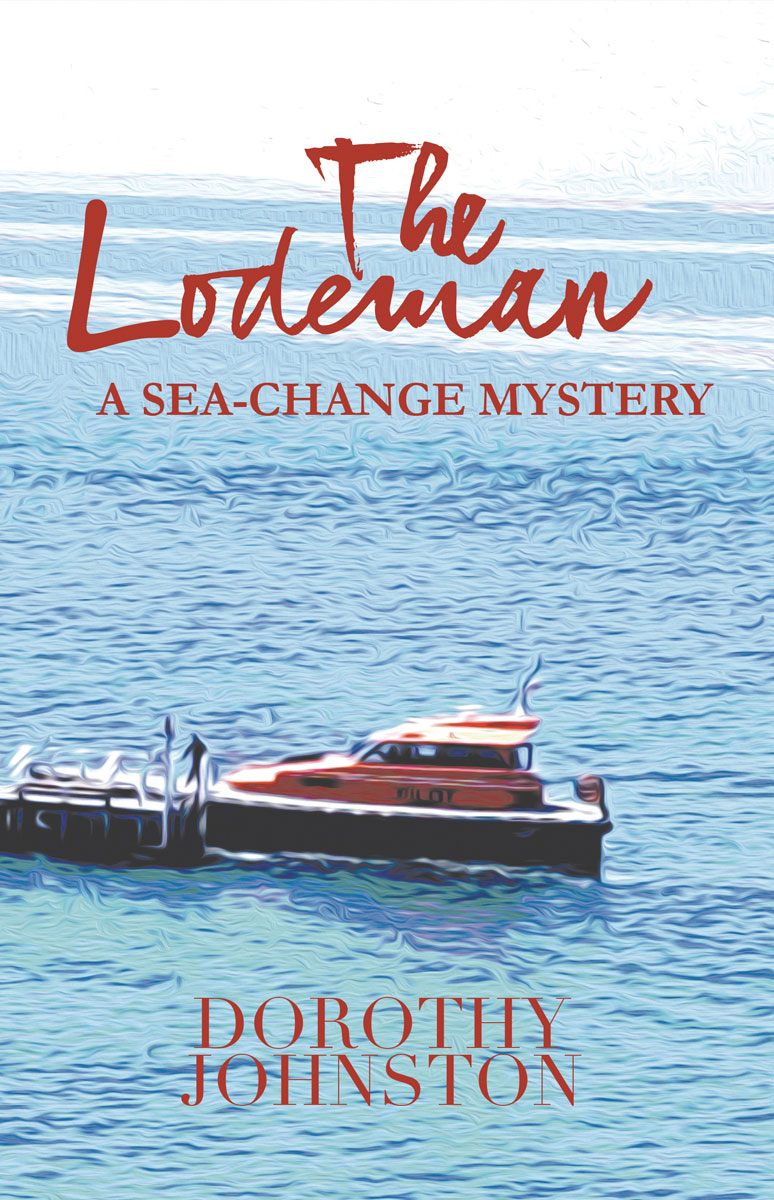Authors sometimes grumble about their editors, and the question I’ve chosen as a title for this post is one I’ve often heard authors repeat.
But I’m pleased to say that I have a wonderful editor for my new novel, titled The Swan Island Connection. This novel is a sequel to the first of my sea-change mysteries, Through a Camel’s Eye, which was published in April by For Pity Sake Publishing.
The editor’s name is David Burton. David, an editor with For Pity Sake, is also an award-winning playwright and theatre director, whose plays include April’s Fool, Orbit and The Landmine Is Me. He has written a memoir titled How to be Happy. As an editor, Dave possesses that rare quality, (rare in my experience), in that he takes the trouble to see into an author’s mind, think about where he or she is trying to get to, and how he might help them to arrive.
Dave read what I am now calling the Dog’s Breakfast Draft (DBD) of The Swan Island Connection and wrote a nineteen page report. When I first saw the report, I felt daunted. There must be an awful lot wrong with the manuscript, I thought, to require this many pages. But the report, while critical, is constructively so, and that makes all the difference. In tone it is far from negative, and is full of helpful ideas and suggestions. And the very fact that someone who know what he’s talking about has paid such close attention to my DBD has given it, and me, a whole new lease of life. Thank you, Dave!
The Swan Island Connection will be my eleventh novel to be published. The first was in 1984, and since then I’ve run the gamut from good editors to woeful. Amongst the good I number Jenny Lee and Lois Murphy, and amongst the woeful, who shall be nameless, the lesbian separatist who read my book about the British atomic bomb tests at Maralinga. This was not, on the face of it her subject, and she made no effort to meet me half, or even a quarter of the way. Another was the editor who used to ring me at 6 PM, just before she left the office, to discuss editorial points that required thought and concentration. At the time this editor was assigned to me, I had a four-year-old and a baby who wouldn’t sleep, plus a deadline for the manuscript. One horrible evening I shouted at her down the phone, ‘Don’t you realise it’s jungle hour!’ I’ve felt ashamed of that outburst ever since.
Then there was my New York editor whose publishing company had bought the first two of my Sandra Mahoney Quartet (mystery novels set in Canberra, where I lived for thirty years). This editor, though I respected him, and of course felt grateful that my books were going to be published in the United States, insisted that I change all my galahs to parrots, all my jumpers to sweaters, and that I massage the text in various other unsavoury ways in order to make it more attractive to an American readership.
Recalling all that, I’ll say again – thank you, Dave!
And thanks to Bill Whitehead the cartoonist for reminding me how much I like Dickens.
My review of Stephanie Bishop’s second novel, The Other Side of the World was published in the Fairfax newspapers this weekend. Bishop was named one of the Sydney Morning Herald’s Best Young Australian Novelists for her first novel The Singing.
This second one – and the other side of the world is Australia, viewed from the northern hemisphere, mainly England – tells the story of a young couple who emigrate to Fremantle in the 1960s.
I won’t repeat the points I make in my review, except to say that The Other Side of the World is an accomplished, moving novel. Instead I’m adding a few thoughts about historical fiction and contemporary writing styles, which I didn’t have the space to mention in my 700 word review.
It’s commonplace to say that historical fiction has enjoyed a renaissance in the last couple of decades, and that this includes works set in the distant, as well as the more recent past – a category that includes Stephanie Bishop.
Bishop’s intimacy with her characters, and the thin membrane which separates their inner lives from the physical worlds around them, works admirably for the story that she has to tell. She says in her acknowledgements that the novel was inspired by the migration of her grandparents. Bishop can draw on universal themes of exile and displacement without having to confront the thorny problems an author faces when dealing with historical events that are widely known, and people who are part of general, that is more than family, history.
Bishop’s up-close-and-personal way of writing has become very familiar to me in recent years as a reviewer and a reader – so much so that deviations from it are unusual. An interesting example is Emily Bitto’s The Strays, which won the 2015 Stella prize. Many reviews have been written of The Strays, most of them highly favourable, and the novel, in my opinion, has much to recommend it. But it popped up in a facebook discussion recently where questions were raised about book’s glittering, imagistic surface compared with the depth and solidity of historical events that took place during the time that the novel covers, events such as the Great Depression, which are not so much engaged with as part of the author’s project, as occasionally referred to.
I’m not putting any of this forward as a way of criticising Bishop, but I do believe there are issues peculiar to historical fiction, matters which ought not to be overlooked, though they often are. These include how to create the resonance of time passing – often a long time – between the characters and events of the novel and the author’s and reader’s present; and how to bring the past to life without pretending, or encouraging the reader to pretend, because she or he feels so ‘close’ to the characters, that it is, necessarily, anything like the world we live in today.
My review of Crow Mellow was published in the Fairfax Press today.
The back cover blurb consists of two sentences. ‘This book is a novel. It has drawings on every page.’
While only the name of the writer, Julian Davies, appears on the front cover, Phil Day’s drawings are an essential part of the reading experience, and so I think it’s fitting to include both names in the title of this post.
Most often, the drawings surround the text; sometimes an illustration occupies a whole page, and half of the adjoining one, so that the words are nestled within it. Of course, this kind of reading experience is familiar to us from children’s picture books.
Day’s drawings are often ironic, sharp, and poke fun at themselves as well as the fictional characters they depict. Since I’m writing this post on January 10, 2015, I can’t help being aware that any cartoon or satirical illustration has acquired a whole new depth of resonance this week, and will probably retain it for quite a long time to come.
Who is being satirised in Crow Mellow? As I say in my review, it’s a bunch of people staying in a rich man’s country house. Crow Mellow is modelled on Aldous Huxley’s debut novel, Crome Yellow, published in 1921. Davies’ protagonist echoes Huxley’s – an aspiring writer beset by self-doubt. In both books, the wealthy host is writing a family history. There is a beautiful young woman with whom the protagonist is in love, and a bitter, wordy individual, who acts as a kind of chorus, in the tragic sense, to the mostly frivolous proceedings.
In an interview with Sally Pryor, Julian Davies talks about writing and publishing these days, and in particular Finlay Lloyd, which he established as a non-profit publishing venture in 2005, initially as a partnership with four people.
‘”The thing I realised is what a hidebound set of conventions book publishing is bound by, and literary people don’t even think about it,” (Davies) says. “And sadly, often literary people aren’t very visual and most books are horribly over-designed. Even the better publishers, the books are so covered with gumph because everyone’s so scared of their book not selling. They cover it and smother it, and there’s no room for designers to really design.”‘
‘By the time Davies had become fed up with mainstream publishers, Phil Day and his then-partner were already producing handmade books in small editions as Finlay Press in Braidwood. With Davies, they decided to start publishing books together, and their great friend, the artist Robin Wallace-Crabbe, was also keen to be involved. But eventually Day and his partner split up, Wallace-Crabbe drifted away from the process, leaving Day and Davis to their own joyful devices.’
Pryor’s interview is informative and interesting, well worth reading in its entirety. As is Crow Mellow. I’m just sorry I’m not clever enough to be able to scan a double page of the story, plus illustrations, for this post.
My review of Window Gods was published in the Fairfax press today. Though on the surface, and at the start, it appears to be a straightforward ‘novel of manners’, Window Gods turns out to be a surprising, many-layered book.
There’s a lot about art and artists – visual, literary, botanical – here’s a quote that has stayed with me and that I didn’t have the space to include in my review:
‘…the hypothesis with which the artist is stuck is the lifelong nub against which talent writhes like a cat possessed. You have to stick with the nub despite fashion and fortune – or never produce a body of work. Too bad if your idea is bad or infantile, or proves to be a cul de sac or something that happens before its time. Art is a never-ending fascination with perception. It’s facile to say all people are artists; artists are those who embrace the nub and never give it up.’
When I came across AS Byatt’s description of the modern sentence, it was with a sense of deep familiarity.
‘A good modern sentence proceeds evenly, loosely joined by commas, and its feel is hypothetical, approximate, unstructured, and always aiming at an impossible exactness which it knows it will not achieve.’ (A. S. Byatt, “True Stories and the Facts in Fiction”, in On Histories and Stories, Selected Essays, Harvard University Press 2001)
The sentences Byatt described were the kind that I wrote naturally, it seemed to me instinctively, that I felt at home in. And I immediately recognized the irony; for it is precisely the feeling of being ‘at home’ that is unsettled by such syntax, interrogated by it.
Nevertheless, it felt good. It seemed that, during the years I was teaching myself to write, finding my voice as a writer, I had tapped into a mode of contemporary English that was meaningful because it expressed doubt about meaning, because expressions of doubt and uncertainty were fundamental to it. I had found a sentence construction that belonged to my time and I had made it mine.
Some months ago, I had the opposite experience. I received a reader’s report on a fiction manuscript I had submitted, a report complaining about my sentence construction. The reader described my parenthetic sentences as ‘like listening to a radio that isn’t correctly tuned to the station.’ I didn’t understand the criticism, and puzzled over it. I tried to initiate a dialogue with the reader, but this proved useless.
I finally concluded that, not only did this particular reader have no interest in what was happening inside my sentences, but she had no sympathy for the modern traditions I was writing out of; indeed, to her, they weren’t modern. They were, if she bothered to consider them at all, a thing of the past.
This experience has led me to look differently at writing trends, and to think back over the novels I have reviewed over the last fifteen years.
Many of the books I receive for review are written in the present tense. The present has become the norm, and normative. Sentences which are constructed out of it are shorter and, for the most part, direct; the visual image I have is of sentences all facing the same way.
Partial, verbless sentences are common, or ones in which the present participle is expected to do the work of a whole verb. The idea, I believe, is that this way of writing brings the reader right up close to the characters and the subject matter. The word ‘immediacy’ is often used on back cover blurbs. But I have never, either within an individual review, or in the discussion that goes on around them, found anybody making a case as to why immediacy, conceived in this way, matters. The beneficial effects are taken for granted.
I would love to find a discussion somewhere about what might become lost as this fashionable style spreads. Ambiguity has its dangers; I’m well aware of that. But I wish someone would explain to me why getting rid of ambiguity is better, or convince me that prose that strikes my ear as glib and shallow has more to offer than I give it credit for.
The present tense is supposed to bring readers right up close to the action, to make them feel that they are part of actions that are happening right now. These are illusionist’s tricks. You might argue that all writing makes use of illusion, and it does. But what troubles me is that the ubiquitous present, unrelieved by any other tense, unrelieved by even the pretence of narrative distance, makes it all too easy for the narrative voice to celebrate superficial reactions and emotions and to look no further.
Another way of putting it, is that the novels read like a rehearsal for the books they might be, if only their authors would reflect more deeply, and make sure their readers were given the space and the time to reflect as well.
You can read an essay I wrote for Spectrum on the present tense here.

